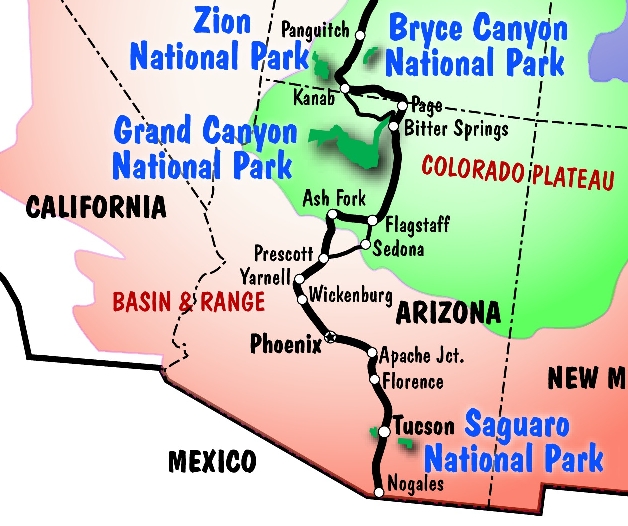Highway 89 equals or exceeds with its multitude of deserts, plateaus, mountains and plains. This spectacular geography owes its origin to the awe-inspiring geology of the intermountain west, for this is an area that has been alternatively inundated by seawater, scorched in Sahara-like deserts and cooled by equatorial rains. Mountains have risen here before, only to be subdued and completely eroded away by the eons of wind, water and time. Each of these ancient settings left subtle but distinctive clues upon the landscape. These hidden secrets are now recovered by geologists in their quest to obtain riches from the land - oil, coal, gas and hard rock minerals. Along this path to treasure emerge stories that have no monetary value, yet they increasingly serve to enrich a population of residents and travelers alike who are keen on recapturing a sense of discovery. What once was known only to scientists is now becoming an open book to anyone with an smattering of interest in the history of our planet. Once complex theories are now guideposts to discovery for interested travelers.
Highway 89 yields to the lay of the land and this undulatory routing may be the ultimate source of its attraction.
It may seem ironic then, that this highway is also squarely directed at the momentous landscape features that lay astride its path, including seven national parks. One could drive this road from the Mexican border to Canada and feel like they had seen much of America, such is the diversity of landforms found here. On this geologic journey, one encounters deserts, plateaus, mountains and plains and each of these generic settings harbors a formal name, some of which are familiar to travelers. These are the Basin and Range, the Colorado Plateau, the Rocky Mountains and the Great Plains. Highway 89 touches them all and anyone who studies this route will want to become familiar with the geologic history of these provinces. The purpose of these geologic narratives is to give travelers a sense that they are embarking not only on a physical journey on Highway 89, but also on multifarious journeys, which take them through time. These journeys are resurrected from secrets long held within the rocks and landforms seen along the route of US Highway 89.





